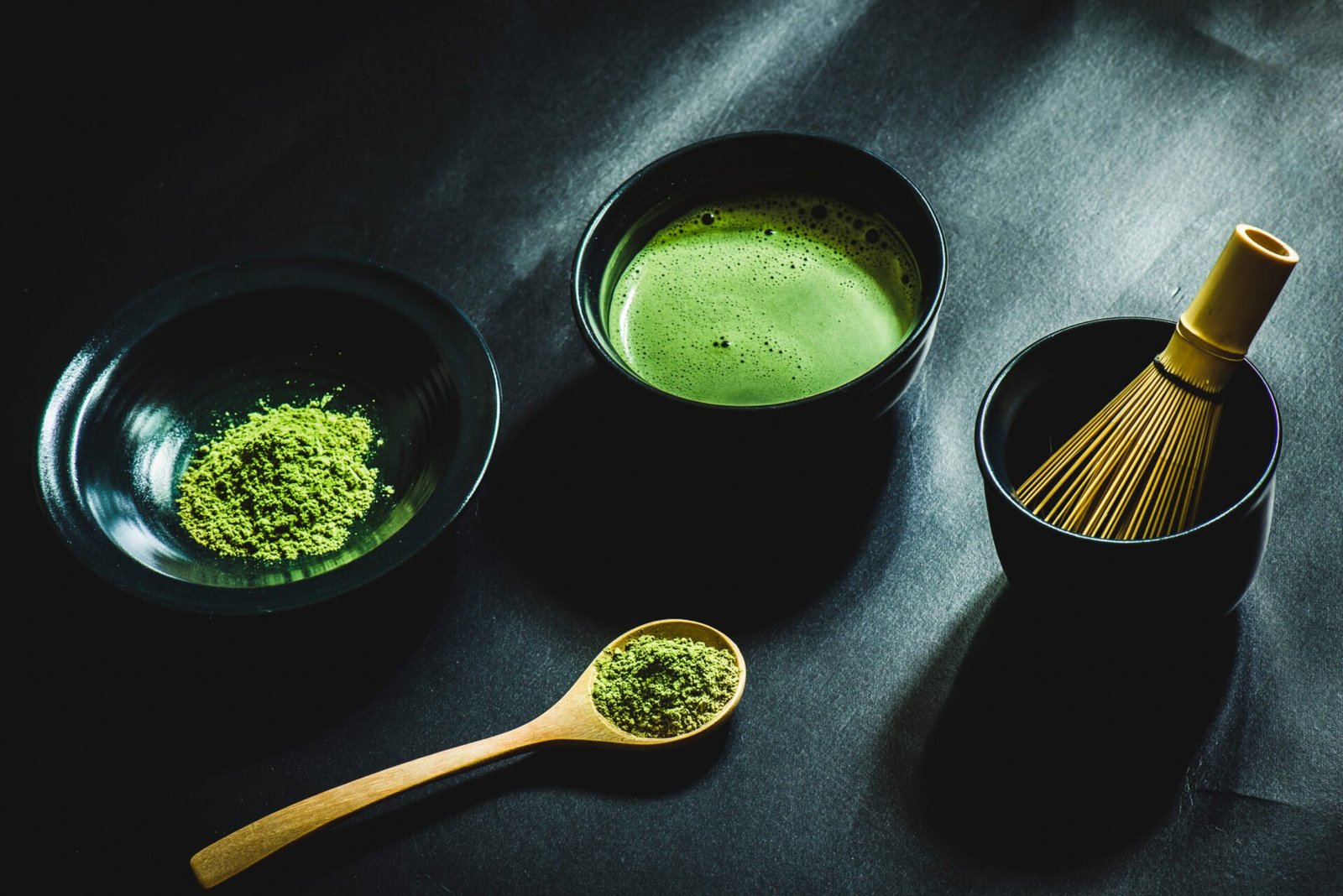Matcha and Wagashi: The Heart of Japanese Sweets and Desserts
In the world of Japanese sweets and desserts, the pairing of matcha and wagashi represents the pinnacle of culinary artistry. This quintessential combination not only delights the palate but also embodies centuries of Japanese cultural traditions. Let’s explore why these two elements of Japanese confectionery create such a perfect harmony and how they’ve shaped the landscape of traditional Japanese desserts.

Matcha: The Cornerstone of Japanese Tea Ceremonies and Sweets
Matcha is a type of green tea that represents Japan, but it has characteristics that set it apart from regular green tea. Matcha is made by grinding tea leaves into a powder, which is then dissolved in hot water. This allows you to consume the entire tea leaf, which is its unique feature.
The history of matcha dates back to 12th century China. It’s said that powdered tea, which Zen monks drank to stay awake during meditation, was brought to Japan and became the origin of matcha. From the Kamakura to the Muromachi period, it developed into Japan’s unique tea ceremony culture.
The production process of matcha is also special. About 20 days before picking new buds, the tea plants are covered to block direct sunlight. This increases the umami components like theanine and amino acids while suppressing the production of catechins that cause bitterness. After harvesting, the tea leaves are steamed, dried, and carefully ground into powder using a stone mill.
Wagashi: The Evolution of Japanese Confectionery Art
The origin of combining matcha and wagashi dates back to the Muromachi period. Matcha, which came from China along with Zen Buddhism, eventually developed into Japan’s unique tea ceremony culture. As the tea ceremony evolved, so did the wagashi that complemented matcha.
Initially, tea sweets were simply meant to satisfy hunger. Gradually, they became an important element in expressing the atmosphere of the tea ceremony and the sense of the seasons. Wagashi that could soften the bitterness of matcha and enhance its flavor became sought after, leading artisans to create various types of wagashi with their skills and creativity.
The Perfect Pairing: Why Matcha and Wagashi Complement Each Other
There are scientific reasons for the good compatibility between matcha and wagashi. Components in matcha such as catechins and theanine produce bitterness and astringency. On the other hand, the main ingredients of wagashi, sugar and bean paste, provide sweetness. This balance of sweetness and bitterness pleasantly stimulates our taste buds.
Moreover, when the umami components of matcha and the sweet components of wagashi mix in the mouth, a new flavor is born. This is called the “synergistic effect of taste,” creating a deliciousness that surpasses tasting matcha and wagashi separately.
Furthermore, the contrast between the green of matcha and the colors of wagashi, the harmony of their aromas – these combinations that appeal to sight and smell also enhance their charm.
Seasonal Harmony: Wagashi and Matcha Throughout the Year
Japanese wagashi are known for expressing the changing of the seasons. The combination of matcha and wagashi also changes with the seasons.
Spring: Wagashi with cherry blossom motifs, like sakura mochi and domyoji, are popular. The contrast between the pale pink wagashi and the vivid green matcha evokes the arrival of spring.
Summer: Refreshing wagashi like mizu yokan and kuzu kiri are preferred. In the hot season, pairing these with cold matcha creates a more cooling experience.
Autumn: Wagashi using autumn flavors, like chestnut kinton and persimmon sweets, appear. These rich-flavored wagashi further enhance the taste of matcha.
Winter: Wagashi with moist textures, like gyuhi and yokan, are favored. Combined with warm matcha, they create a combination that warms you from the core.
By choosing wagashi according to the season, you can experience the beauty and atmosphere of nature through taste.
The Art of Enjoying Matcha and Wagashi: A Guide to Japanese Dessert Etiquette
There are several points to make your matcha and wagashi experience more delicious:
- Order: Generally, it’s standard to eat the wagashi first, then drink the matcha. This is because the sweetness of the wagashi remaining in your mouth softens the bitterness of the matcha.
- Temperature: Ideally, matcha should be drunk at around 70°C, slightly cooler than boiling. If it’s too hot, the flavor is compromised, and if it’s too cold, the umami is harder to taste.
- Quantity: Choose an amount of wagashi that can be eaten in one bite. It’s recommended to drink matcha in small amounts, savoring it slowly.
- Environment: If possible, enjoy in a quiet and calm environment. The surrounding atmosphere also affects the taste.
- Mindset: Try to view the time enjoying matcha and wagashi as a special moment to step away from daily hustle and quietly face yourself. This can lead to a deeper taste experience and a healing time.
Conclusion: Matcha and Wagashi, The Ultimate Combination Born from Japanese Aesthetics
The pairing of matcha and wagashi is more than just a combination of flavors; it’s a gateway to understanding the depth and beauty of Japanese culinary culture. As you explore the world of Japanese sweets and desserts, remember that each bite of wagashi and sip of matcha represents centuries of tradition, artisanal skill, and a profound appreciation for nature’s rhythms. Whether you’re savoring a delicate nerikiri in spring or a warming yokan in winter, the harmony between matcha and wagashi offers a unique and unforgettable taste of Japan’s rich confectionery heritage.
